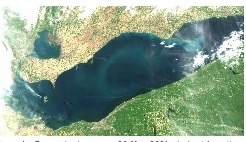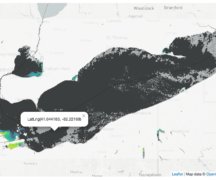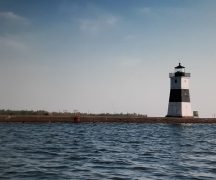Projections from NOAA/National Center for Coastal Ocean Science for the severity of the western Lake Erie cyanobacterial harmful algal bloom continue to be for a smaller than average, with severity expected to be less than 5. The highest registered since 2002 was 10.5 in 2015.
Discharge of water from the Maumee River was below average in March and April, due to lower than average rainfall, which led to low phosphorus loads in early spring. While weather systems in May are bringing rain to the region, there is still uncertainty in the weather models on exact amounts, placement and intensity of rainfall in May which leads to uncertainty in the discharge and the phosphorous load. In June, we expect a return to normal rainfall with less uncertainty in the discharge.
Total bioavailable phosphorus (TBP) is the sum of dissolved phosphorus and the portion of particulate phosphorus available for HAB development. The TBP loads are projected based on Heidelberg University data, river forecasts from the National Weather Service Ohio River Forecast Center (through early July), and previous years to the end of July.





